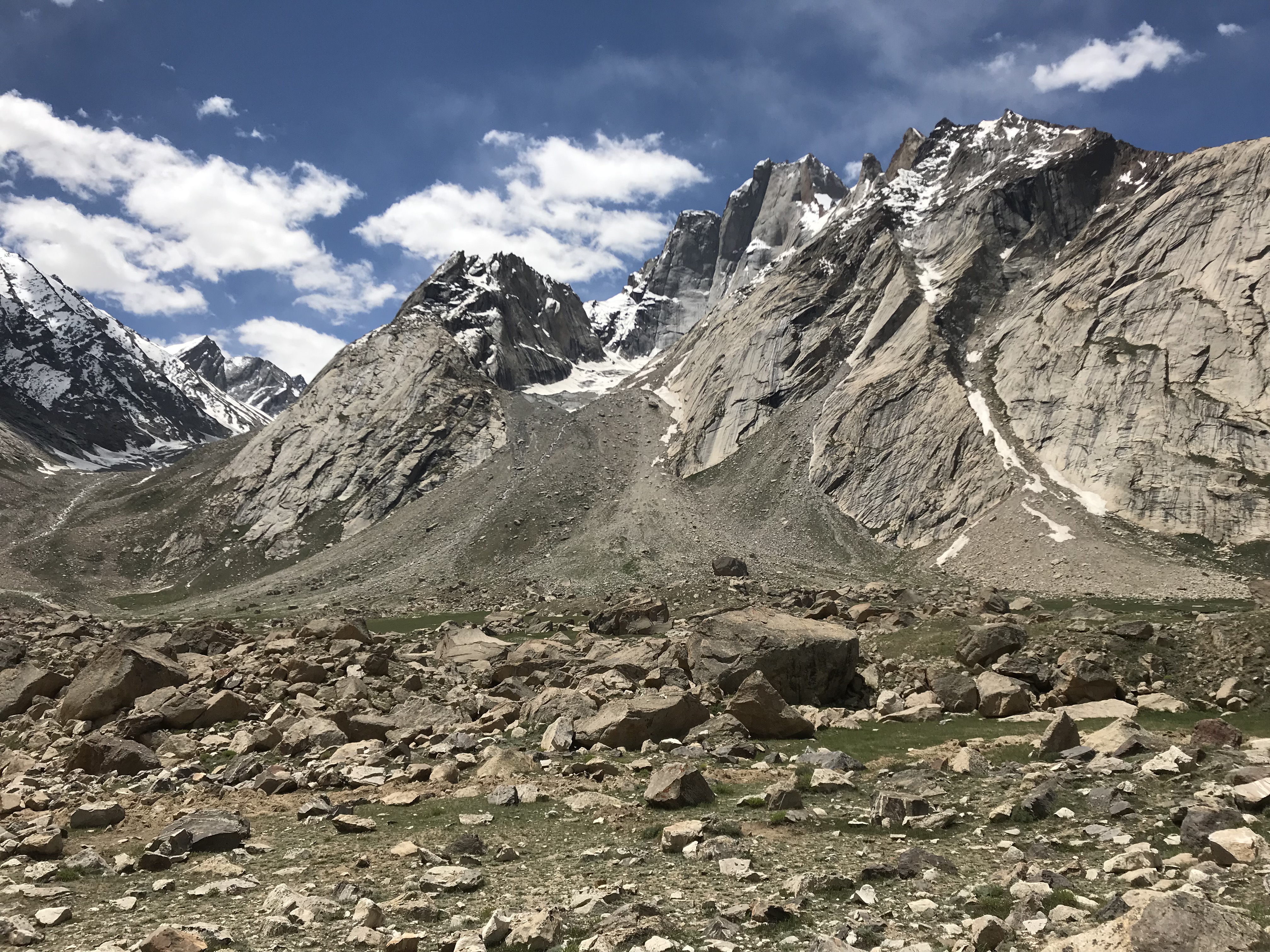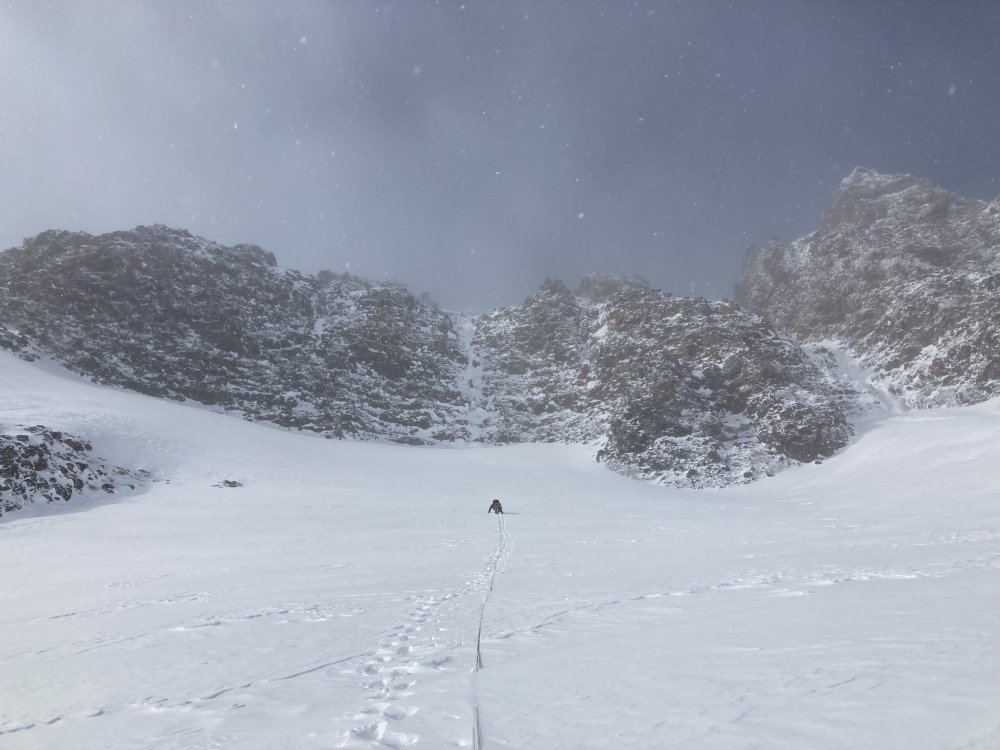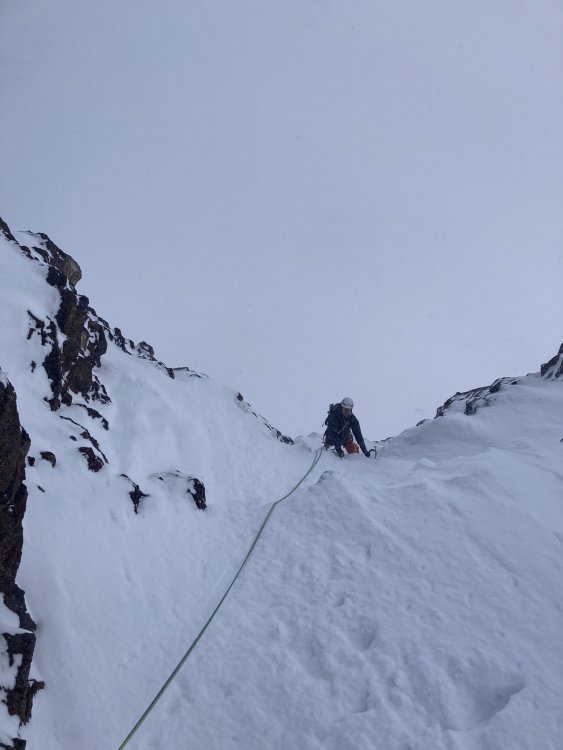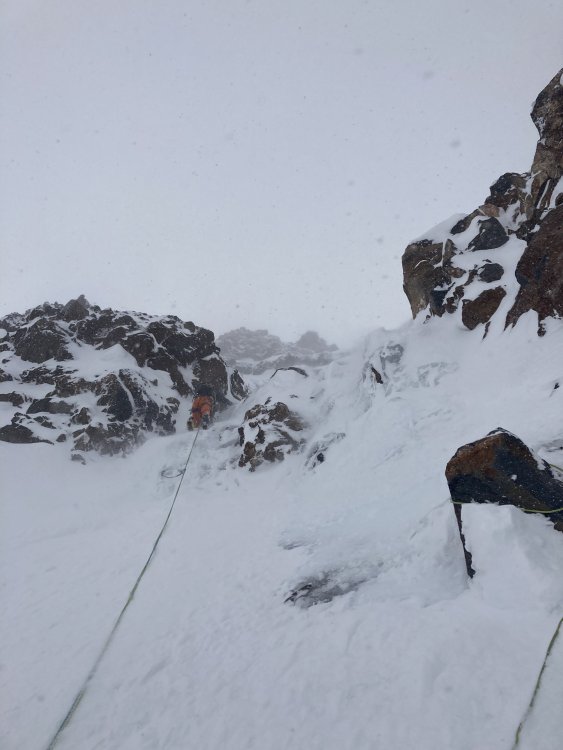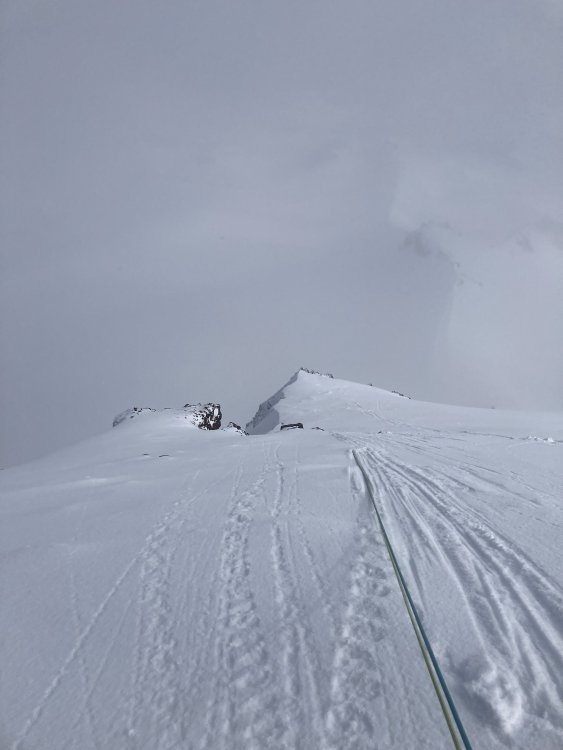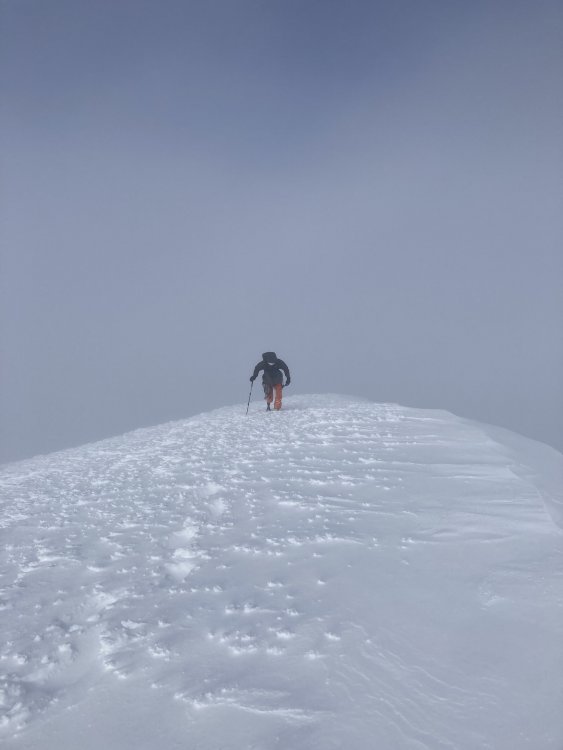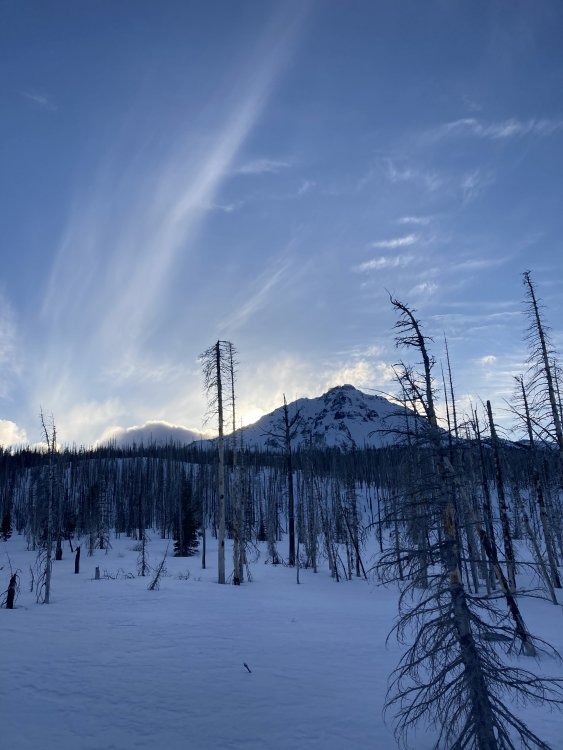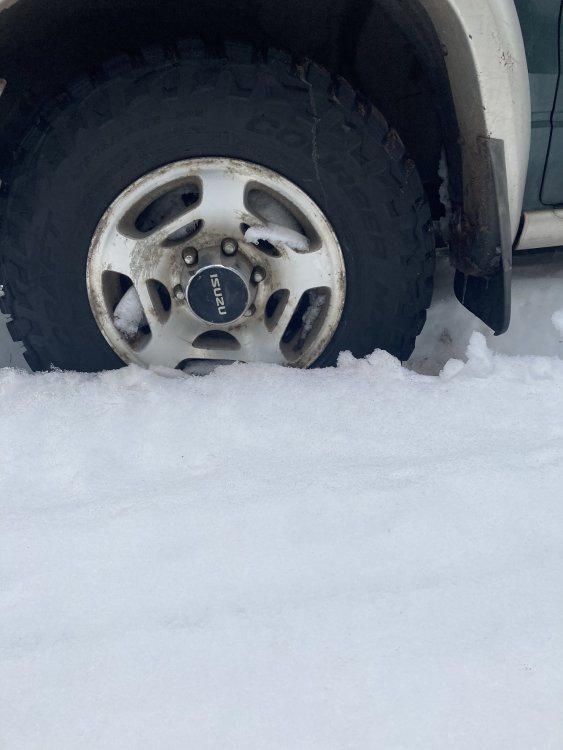-
Posts
526 -
Joined
-
Last visited
-
Days Won
55
Everything posted by bedellympian
-

Solo Alpine Climbs in North Cascades National Park
bedellympian replied to Cascade Renegade's topic in Climber's Board
Good points. I retract my recommendation!- 13 replies
-
- 1
-

-
- north cascades
- alpine
-
(and 1 more)
Tagged with:
-

Solo Alpine Climbs in North Cascades National Park
bedellympian replied to Cascade Renegade's topic in Climber's Board
When I did it in June '16 it was pretty chill. Boot pack on easy snow. Seems like you can stay far enough from the edge to not worry about anything but a fully catastrophic serac failure? I have a few guide friends who are very risk averse but have enjoyed that route as a romp.- 13 replies
-
- north cascades
- alpine
-
(and 1 more)
Tagged with:
-
These TRs from June 2016 probably help. Compare the snow packs from this year to that to get an idea of how to scale. https://sites.google.com/stephabegg.com/washington/tripreports/vesper-ragged?authuser=0 https://sites.google.com/stephabegg.com/washington/tripreports/bigkangaroo?authuser=0 https://sites.google.com/stephabegg.com/washington/tripreports/burgundy-nf?authuser=0#h.f9kufph9eib1 https://sites.google.com/stephabegg.com/washington/tripreports/stuart?authuser=0#h.8ttdu7i41oye
-
WA pass approaches will be on snow. Bring boots or GTX approach shoes and light crampons for any steep/exposed approaches. Probably a light axe too, though if you are comfortable you can always do the rock trick ... gloves should be obvious, and a spare pair of socks in the pack.
-

Solo Alpine Climbs in North Cascades National Park
bedellympian replied to Cascade Renegade's topic in Climber's Board
I second W MacMillan and Eldorado as good options. Edited: Not off Hwy 20 and, but Fisher Chimneys HAS LOTSA CREVASSES, NOT RECOMMENDED!!!- 13 replies
-
- north cascades
- alpine
-
(and 1 more)
Tagged with:
-
Recent FA claims have me thinking of this thread. The desire to spray about your FA just because no one else has sprayed about the same line, and the desire to continue to claim an FA or similar accomplishment seems to stem from a lot of the same themes discussed here... self-aggrandizement, ego, and lack of honesty. For some reason this seems to be a common issue on Mt. Hood where you have many experienced climbers who have used it for training over the years and would never have thought to report a few moderate pitch variation as an FA and now those of us who have come up in the age of instagram assuming there are undone lines simply because it didn't show up anywhere on the internet. I experienced this issue a few years ago when I went to publish known routes on MP and was asked not to. Part of the reason given by developers and other regulars there was the parking access situation, but the other reason was to preserve the sense of adventure. The community by-and-large did not want to know what was there so that they could continue to practice ground up adventure climbing. Every ascent felt like an FA, until you found some old pins or a bolted belay station, but you had to mentally commit and prepare in the same way. Maybe, for scant resources like Mt. Hood ice routes this same ethic would preserve that sense of adventure. People could simply say "I climbed the Eliot" and post some cool pictures instead of worrying if that exact rock step or ice flow has been done before. Then everyone could go have an adventure and we can build skills for bigger adventures in bigger mountains (which I thought was the point and might actually lead to real FAs).
-
May is not a great time for rock yet; I would doubt you can get into Forbidden easily either. Weather is also less stable this time of year so that would dictate my climbs. If N Ridge of Baker is a goal I would do a steep snow climb, then a steep snow with glacier climb, then that one. You could do all those on/around Baker. That said, weather could just be junk too so you might do the first two on Hood or another volcano. For alpine rock I would look at the Stuart Range as access can be better this time of year and it will be drier than N Cascades (still a hike).
-
Its going to be warm AF any day with sun. I would go out the night before and camp just outside the cirque. Scope the route that night so you can top out as sun hits. 9 o'clock faces east, 11 o'clock faces SE, High Noon faces south. First two are straightforward snow climbs (cornice topout is possible but should be small this time of year), High Noon is capped with low 5th rock for a pitch or two. Honestly, I would recommend this as an early winter zone more than a spring zone, its just too warm this late in the season.
-
It went away for a while but is popping up again.
-
@JasonG @olyclimber any ideas here?
-
Yes, BUT it also is an activity/sport with a strong sense of community and history where we acknowledge what others have done (for better or worse, for awards/$$$ or otherwise), and if you choose to be part of that community by sharing experiences and you then LIE about what you actually did then you are undermining the community (of which this website is a part). Do what you want, but if you're going to participate in the communal/historical portion of climbing then tell the truth.
-
Is there a reason that every time I open the forums now I get a pop-up tab with some sort of sketchy internet ad? It only happens with this site. Thought maybe there is something I can do on my end? I use chrome. Thanks in advance.
-
Go the earliest there is a weather window after the road opens. Also, snowpack AROUND Rainier doesn't correlate with glacial cover/recession.
-
Trip: Wyeast (Mt. Hood) - Linkup Trip Date: 04/11/2021 Trip Report: Hood Headwalls: For a long time I've been thinking about linking a route on each of Wy'east's 6 headwalls in a day. Black Spider, North Face, Eliot Headwall, Sandy Headwall, Reid Headwall and DKH. I gave it a shot today and got 5/6. I figured I'd share to inspire others. Obviously someone needs to be fit, but this is only about 12k' of vert, not crazy in the scheme of things. The real challenge is finding conditions that leave all routes climbable and allow fast movement. I had intended to start with Center Drip but the orange avy forecast had my partner sketched out. For those concerned with doing my risk assessment for me I will say that those watching the time-heights this week will have noticed that 90% of the weather happened below 7k' (NWAC does not forecast for the upper mountain). Also worth noting: the wind loading was from the W, and even if this hadn't scoured the approach up the S Side to check the upper mountain, the S side is not steep enough to classify as avalanche terrain until well above Palmer. But I digress... With no partner for Center Drip, and a small chance of pocket slabs on that aspect anyway, I changed plans to start with Reid. @zaworotiuk was also partnerless for the same reasons and joined last minute for the start. 2:15am hiking start from T-line, had us at Illumination saddle at 4am. The Reid was the usual post hole for the first couple hundred feet and then changed to nice neve. Unfortunately high winds were still hitting the upper mountain and caused quite a bit of rime shedding. I managed to take a blob to the face mid way up but it was luckily not bad. We reached the summit ridge (could have traversed lower) and Matt took off for DKH and meeting other friends for a possible Eliot route. I turned down Cathedral and descended until I could down climb to the Sandy. I hadn't been on Cathedral or Sandy before so I had to back track and down climb some ice through a rock band to reach the glacier. Sandy itself was chill (its a ski run, not sure how the guidebook called it AI3). Once I topped out I walked over to the Queen's Chair and traversed into Eliot, climbing a middle-right line (starting a little L of Adrien's from earlier in the week and finishing with the same steep section). I traversed over the summit and took a break before down climbing Cooper Spur (very good conditions for this) and using Timmy B's beta to trend skier's L and get onto the Eliot glacier. The L hand sneaker ramp past the gaping schrund is still in and R gully went smoothly (except slowly cause I was feeling a little tired at this point). Once back on the summit I took a long water break to slurp awkwardly from my bladder (I somehow thought it would be warm enough for a hydration pack setup and it froze in the hose so at this point I'd probably had ~1/2 L in 8-9hrs of exertion). I then descended Pearly and met Matt again (he had soloed DKH and Elliot and done some PMR rescue practice during all this) and we climbed next to each other up DKH #1 for my last route. I had thought about looking at the Spider after all this, but I was too bushed to safely consider soloing Center Drip and my friends Lindsey and Riley had tried it earlier that day and bailed due to lack of ice. Wy'east could have been subbed as an alternative but, that is more of a ridge climb and just a lot of snow slogging after so much good ice, so I declined and plodded back down to our cars. Matt topping out Reid Coming up Sandy Looking down Leutholds Eliot Summit views Down Cooper R gully Summit again DKH w/ Matt Final summit Strava map Strava track: https://www.strava.com/activities/5111832990 Gear Notes: pointy things and a helmet Approach Notes: Palmer
-
Somehow that link redirects back to this page... but the address is good!
-
Peak and summit are synonyms. Saying you climbed the peak, regardless of your thoughts, is mis-communicating what you did. Just say you "climbed the route". It's more descriptive of what you did and does not mention a peak or summit, so no confusion.
-
Got a week off coming up and the border to Canuckistan still closed so a buddy and I are considering the "long" trek from Oregon to Washington to get all alpinistic on things we can't normally do in a weekend. Obviously I've been checking weather and avy but I'm hoping for some boots/skis on the ground conditions. Any tips on what elevations and aspects are seeing ice or neve form, vs staying snow, or just melted to bare rock would be appreciated. Especially interested in the Enchantments and 6-8k' elevation on the W side of North Cascades NP, though any location in the range is helpful for getting an idea. Thanks everyone! Edit: I'm pretty unfamiliar with access outside of the Enchantments and roadside routes this time of year. I'm assuming the gate is closed on 8 mile in the Enchantments? What about the Chiwawa River Road? Cascade River Road? I'm guessing both are gated or impassable at certain points, wondering if anyone has recent knowledge before I go calling FS or NPS on my lunch break. Thanks!
-
Trip: Middle Sister - Emde/Ablao Trip Date: 03/06/2021 Trip Report: Probable second ascent of the Emde/Ablao with Adrien Costa. This is the ice smears and columns to the L of the Direct NE Face route from Oregon High. Perhaps some other people know of someone who has climbed it? Steep snow above the schrund (currently covered) leads to a varied and engaging 60m pitch (difficult to protect) with a couple overhanging bulges. Above this we traversed L on snow to join the E Rib. AI4/4+ R/X seems about right. Me approaching the route, NE Face Direct's couloir is to the R. Photos of me by Adrien (obvs). Me starting the crux. Approaching the crux bulge. Adrien topping out the crux pitch. Adrien leading easier terrain above between spindrift pulses. Coming up the E rib. Adrien approaching the summit. The thing you do when you top out. North Sister with sun setting. Still got a few miles back to the car. Road conditions beta. Gear Notes: screws, cams, pins, nuts Approach Notes: long skin from before Pole Creek TH (17 miles and 4k' round trip from where we got the truck stuck)
-
I agree with Jason that if you don't touch the summit you did not climb the peak. I also agree with Gene that if you get home safe and have fun that is more important. I will add that if you're going to spray about your trips just be honest about what you did and don't try to couch it in a way that implies something other than the truth. I got within spitting distance of an unnamed summit in India a couple years ago soloing, certainly closer than the Challenger scenario you mentioned. I turned around when I got to a loose rock band just below the top. I did not summit, I did not climb the peak. I accomplished everything I wanted to by staying safe, having fun and testing my body at altitude. If you need to hide the truth to portray a certain outcome then your ego is much too involved and you should probably do some serious self-reflection.
-

[TR] Mt Shasta - Avalanche Gulch 02/22/2021
bedellympian replied to adventure43's topic in California
Spring ski is definitely the best way to go on Shasta, the mountain is made for it. Look at the Hotlum Wintun route if you enjoy some steeper angle, otherwise the west face if it ever fills in with snow this year. -
I would advise checking different aspects and trying different volcanoes from Hood. Hood gets very wet/rimey storms and the South side gets side-blasted. Often the Sisters, Jefferson, or Adams will have much drier snow (as in it actually deposits snow and not ice blobs).
-
I figured I'd share this as its helped me a fair bit as someone who trains constantly. I've told several partners about it and they have started doing the same thing. I find it very helpful for mountain athletes, especially when the local weather is not consistent (i.e. winter in the PNW). Most endurance athletes keep a weekly total of their volume and start their weeks on either Sunday or Monday, but I've started beginning my weeks on Saturday (or whatever your first free day is if your schedule is not traditional). This allows you to have more flexibility on the weekends. I used to start my training weeks on Monday and I would spend hours watching the weekend forecast, trying to move around workouts and adjust aerobic session lengths in anticipation of what I would most want to do that weekend. Obviously you want to keep your training fairly consistent, but you also want to take advantage of those occasional winter weather windows. Too often I would see next weekend looking really good and slack off on my volume a bit in the hopes of going into the alpine, only to have the forecast slowly shift and I'd be left trying to do all my vert and my long effort for the week by lapping crap snow in terrible weather. Conversely, I'd see terrible weather coming and would front load my week so I could spend a little extra time with the wife on the weekend, but then a good weather window would appear and I'd be left wondering if I should go way over my volume to try something while tired, or just sit around and watch a great opportunity pass. Now that I start my weeks on Saturday I can make last minute plans and have way less stress. If the weekend is great, I can go do an alpine day or ski tour that fits within my weekly volume, and then do shorter strength and easy aerobic as needed to meet my weekly total by Friday. If the weekend is crap I still try get a longer effort but it can be on the lower end of that range and it could be out in the desert or just around town without pressure to hit a certain mark, then I can do some medium-long efforts before/after work during the work week to make sure that I still hit my volume by Friday. For those of you tracking weekly volume and still trying to enjoy some mountain adventures with your days off I highly recommend this strategy.
-
I found out what the units for the wind vane fletchings are... They are in knots (nautical mph) cause everyone knows knots! 1 knot = 1.15 mph A half line = 5 knots A full line = 10 knots A triangle = 50 knots So a wind vane arrow pointing from L to R at 700mbar with a triangle, a line, and a half line coming off its side means wind out of the West at 10,000ft with an average speed of 50+10+5=65 knots or ~75mph (so stay the F%$# home!)
-
In my experience, if the Time-Height is white at summit altitude, then it will be clear. There MIGHT be a summit cloud capping it, but it won't be anything major.
-
This past Friday on Hood was a perfect example of how Time-Heights are better... NOAA pt called for 80% chance of snow and high winds out of the W. The Time-Height showed that while there would be clouds and precip it would be clear above 6,000ft and the winds would actually be out of the NW at that elevation. We went for it and poked out of the clouds at the top of Palmer, while there were high winds in places we were mostly sheltered by the mountain. We were the ONLY climbers or skiers on the entire upper peak that day and climbed Reid Headwall in beautiful conditions under perfect blue sky. We encountered strong winds at Illumination Saddle and on the summit ridge but otherwise it was just a little breezy. We had to start and finish skiing in the cloud layer in what looked pretty terrible from the parking lot, but persistence and confidence in the forecast paid off.

